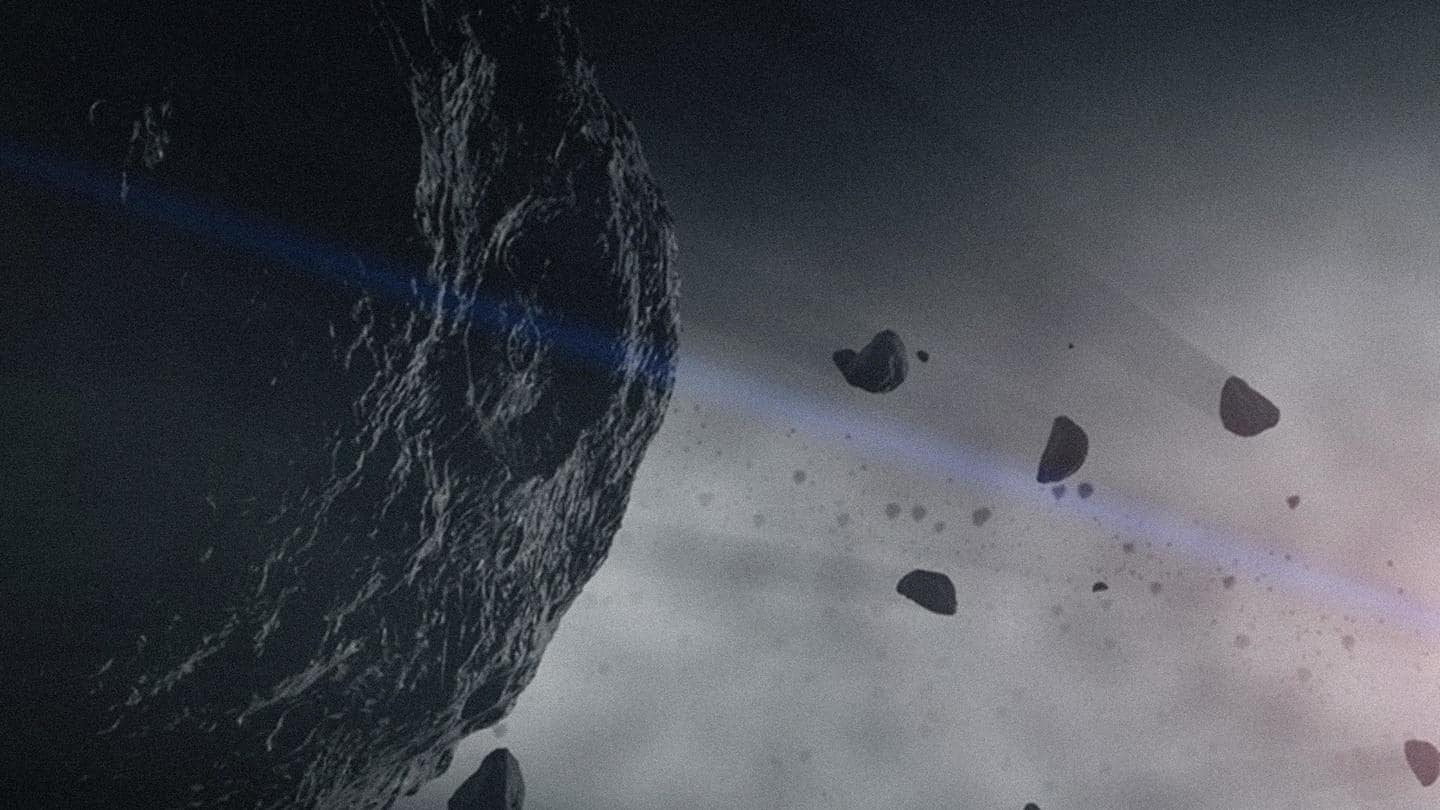
Scientists discover the largest 'potentially hazardous' asteroid in eight years
What's the story
A team of astronomers at Cerro Tololo Inter-American Observatory in Chile recently discovered three new near-Earth Asteroids (NEAs) via the Victor M Blanco telescope.
One of these space rocks, designated 2022 AP7, is 1.5 kilometer wide. It is claimed to be the biggest potentially hazardous asteroid found over the past eight years.
It does not pose an immediate threat.
Context
Why does this story matter?
Owing to NASA's advancements in planetary defense, whizzing asteroids don't appear to be as daunting as they once were.
However, scientists are taken aback by the latest discovery of the three hidden asteroids. These celestial objects have always been present close to our planet but they were undetectable until now.
This makes one wonder how many disastrous objects are lurking close by.
Difficulty
The asteroids are hidden in the Sun's glare
These asteroids are tucked behind the glare of the Sun and hence spotting them becomes a difficult task.
If you're wondering how NASA's sophisticated observatories such as Hubble and James Webb Space Telescope (JWST) could not reveal these celestial objects, it is because they are positioned away from the direction of the Sun.
The heat and brightness would damage the optical equipment on them.
Possibility
2021 LJ4 and 2021 PH27 are not as dangerous
The newly discovered asteroids are 2022 AP7, 2021 LJ4, and 2021 PH27.
The 2022 AP7 is called a 'planet killer' as it is 1.5km wide. Its orbit might nudge it close to Earth one day, while the other two are less likely to pose a threat.
The 2021 PH27, is the closest one to the Sun. Its surface is hot enough to melt lead.
Information
2022 AP7 takes 1,830 days to complete an orbit
The 2022 AP7 belongs to the Apollo class of asteroids. It takes approximately 1,830 days to complete one orbit around the Sun. It is classified as a "Potentially Hazardous Asteroid" because of its proximity to Earth (roughly 74,79,894 kilometer).
Official words
The DECam can view faint celestial objects with ease
The sensitivity and wide-angle charge-coupled device (CCD) imagers on the telescope's Dark Energy Camera (DECam) can be thanked for this discovery.
"DECam can cover large areas of sky to depths not achievable on smaller telescopes, allowing us to go deeper, cover more sky, and probe the inner Solar System in ways never done before," said Scott S. Sheppard, an astronomer associated with the project.